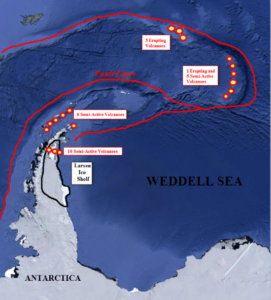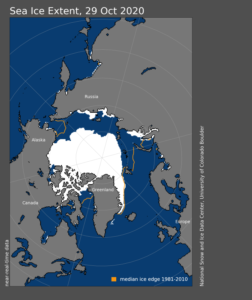by Cap Allon, March 11, 2021 in Electroverse
A “seismic crisis” has been occurring in the area near Fagradalsfjall since late Feb 2021. This activity has been interpreted as intrusion of magma at shallow depths, which could lead to a new eruption.
Fadradalsfjall is a Pleistocene table mountain in the Reykjanes Peninsula, NE of Grindavik, Iceland.
…
…
Of today’s reawakening volcanoes, those located in Iceland are perhaps the most concerning.
It is this highly-volcanic region that will likely be home to the next “big one” (a repeat of the 536 AD eruption that took out the Roman Republic…?) — the one that will return Earth to another volcanic winter.
Volcanic eruptions are one of the key forcings driving Earth into its next bout of global cooling.
Volcanic ash (particulates) fired above 10km –and so into the stratosphere– shade sunlight and reduce terrestrial temperatures. The smaller particulates from an eruption can linger in the upper atmosphere for years, or even decades+ at a time.
Today’s worldwide volcanic uptick is thought to be tied to low solar activity, coronal holes, a waning magnetosphere, and the influx of Cosmic Rays penetrating silica-rich magma.
The COLD TIMES are returning, the mid-latitudes are REFREEZING in line with the great conjunction, historically low solar activity, cloud-nucleating Cosmic Rays, and a meridional jet stream flow (among other forcings).
Both NOAA and NASA appear to agree, if you read between the lines, with NOAA saying we’re entering a ‘full-blown’ Grand Solar Minimum in the late-2020s, and NASA seeing this upcoming solar cycle (25) as “the weakest of the past 200 years”, with the agency correlating previous solar shutdowns to prolonged periods of global cooling here.
Furthermore, we can’t ignore the slew of new scientific papers stating the immense impact The Beaufort Gyre could have on the Gulf Stream, and therefore the climate overall.







